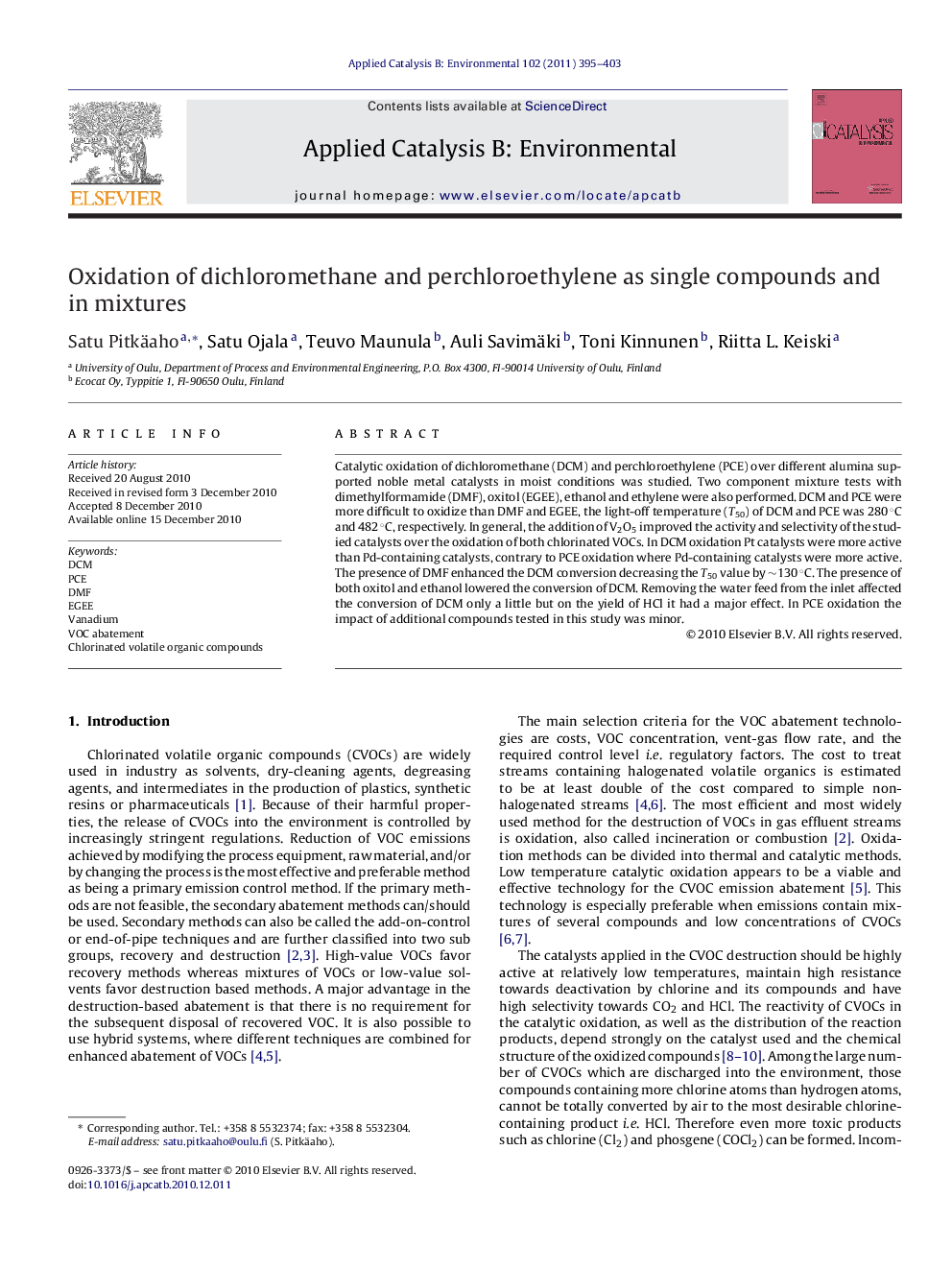| Article ID | Journal | Published Year | Pages | File Type |
|---|---|---|---|---|
| 47103 | Applied Catalysis B: Environmental | 2011 | 9 Pages |
Catalytic oxidation of dichloromethane (DCM) and perchloroethylene (PCE) over different alumina supported noble metal catalysts in moist conditions was studied. Two component mixture tests with dimethylformamide (DMF), oxitol (EGEE), ethanol and ethylene were also performed. DCM and PCE were more difficult to oxidize than DMF and EGEE, the light-off temperature (T50) of DCM and PCE was 280 °C and 482 °C, respectively. In general, the addition of V2O5 improved the activity and selectivity of the studied catalysts over the oxidation of both chlorinated VOCs. In DCM oxidation Pt catalysts were more active than Pd-containing catalysts, contrary to PCE oxidation where Pd-containing catalysts were more active. The presence of DMF enhanced the DCM conversion decreasing the T50 value by ∼130 °C. The presence of both oxitol and ethanol lowered the conversion of DCM. Removing the water feed from the inlet affected the conversion of DCM only a little but on the yield of HCl it had a major effect. In PCE oxidation the impact of additional compounds tested in this study was minor.
Graphical abstractFigure optionsDownload full-size imageDownload as PowerPoint slideResearch highlights▶ Pd-containing catalysts are more active in PCE oxidation than Pt. ▶ The addition of V2O5 improves the activity and selectivity of the studied catalysts. ▶ DMF enhances but oxitol and ethanol decrease the conversion of DCM. ▶ PCE oxidation is not affected by additional compounds tested in this study. ▶ Based on the results two industrial catalysts were developed for CVOC elimination.
